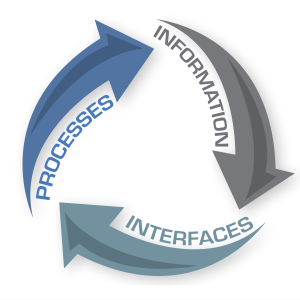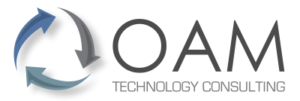
In today’s ever-evolving technological landscape, enterprise architecture stands as the bedrock of organizational transformation. As an IT professional, you’re often at the crossroads, determining which framework best aligns with your organizational needs. Among the contenders, three frameworks tower prominently: TM Forum Frameworx, TOGAF, and the Zachman Framework. Let’s delve deep into their intricate mazes, discerning their unique strengths and limitations.
TM Forum Frameworx: The Telecommunications Titan
Hailing from the telecommunications domain, Frameworx stands tall, tailor-made for an industry that thrives on rapid evolution and demands meticulous standards.
Core Components:
eTOM (Enterprise Process Framework): Provides a comprehensive guide on business processes, tailored for the telecommunications industry.
TAM (Telecom Application Map): Offers a blueprint of the key application domains.
SID (Shared Information/Data Model): An essential data model that underpins the harmonization of data across diverse systems.
Strengths:
Precision: Fine-tuned for the telecommunications arena, ensuring optimal alignment.
Holistic Design: A comprehensive suite that converges business processes, applications, and data.
Standardization Mastery: Pioneers uniform business processes and practices for enhanced efficiency.
However, its specialization can also be a double-edged sword, potentially limiting its application outside telecommunications.
TOGAF: The Universal Maestro
Born from a commitment to universal applicability, TOGAF has etched its legacy across industries. Its appeal lies in its vast scope, rigorous methodology, and adaptability.
Cornerstones:
ADM (Architecture Development Method): A phased approach guiding organizations from vision to implementation.
Architecture Content Framework: Contains the definitions of all the elements present within an architecture.
Advantages:
Broad Horizon: Not anchored to a particular sector, ensuring cross-industry relevance.
Depth and Breadth: The ADM delivers a methodical and in-depth strategy.
Flexibility: Designed for customization, allowing organizations to mold it per their unique requirements.
But, its broad sweep can sometimes be perceived as overly generic, necessitating additional tailoring for specialized needs.
Zachman Framework: The Ontological Maestro
Beyond being a mere enterprise architecture tool, the Zachman Framework is a deep dive into the philosophical underpinnings of an organization, presented as a detailed matrix.
Foundations:
Interrogative-based Matrix: A 6×6 grid exploring the What, How, Where, Who, When, and Why of an organization.
Perspectives and Abstractions: The rows represent different stakeholder perspectives, while the columns dive into varied abstractions.
Merits:
Unparalleled Depth: Provides a profound understanding of both the technical and business facets.
Granular Analysis: The matrix approach offers an unparalleled viewpoint, dissecting the minutiae.
Holistic: Each cell narrates a unique architectural tale, collectively presenting a panoramic view.
Its intricate design, though, can be overwhelming, especially for those venturing into its depths for the first time.
Deciphering The Right Fit
Each framework paints a distinct picture:
Frameworx is like a custom-tailored suit for the telecommunications world.
TOGAF is the jack-of-all-trades, flexible and adaptable.
Zachman is the philosopher’s stone, detailed and introspective.
| Attribute | TM Forum Frameworx | TOGAF | Zachman Framework |
| Purpose | A suite of best practices and standards for the telecommunications industry. | An enterprise architecture methodology and framework for business efficiency. | A structured way to view and define an organization from different perspectives. |
| Key Components | Business Process Framework (eTOM), Information Framework (SID), Application Framework (TAM), Integration Framework | Architecture Development Method (ADM), Enterprise Continuum, Architecture Repository | Matrix of 6×6: perspectives (e.g., Planner, Owner, Designer) and aspects (e.g., Data, Function, Network). |
| Application Areas | Telecommunications industry for business process design, IT software design, system integration. | Various industries for enterprise IT architecture design, implementation, governance. | Various industries for enterprise architecture planning and documentation. |
Your choice pivots on your enterprise’s unique demands. Telecom businesses might naturally gravitate towards Frameworx, while those seeking a flexible guide might find solace in TOGAF. If a detailed, birds-eye view is the need of the hour, Zachman stands ready.
FAQs: Clarifying the Cloud of Curiosity
Q: Can these frameworks intermingle, forming a cohesive strategy?
A: Absolutely. Many organizations integrate aspects of different frameworks, crafting a bespoke architectural strategy.
Q: Which framework promises the quickest ROI?
A: ROI isn’t solely a function of the framework but also of its implementation, the organization’s alignment, and the challenges at hand. While TOGAF and Frameworx provide more actionable steps, Zachman’s depth might translate to longer gestation.
Q: I’m in a non-telecom sector. Can I still use Frameworx?
A: While Frameworx is optimized for telecommunications, elements of its structured approach could be relevant elsewhere, albeit with significant adaptation.
Summary
In the dynamic realm of enterprise architecture, three frameworks stand out: TM Forum Frameworx, tailored for telecommunications; TOGAF, a universal, adaptable blueprint; and the Zachman Framework, a deep, ontological matrix. While Frameworx excels in telecom standardization, TOGAF’s broad applicability suits diverse sectors, and Zachman offers a detailed organizational view. The choice hinges on an organization’s specific needs, with each framework offering unique strengths and challenges. IT professionals must discern which best aligns with their goals, understanding that the right framework can significantly shape their digital future.

Want to learn more about TM Forum Frameworx?
OAM Technology Consulting, with our deep knowledge and experience in the telecommunications and cable industry, can assist Information and Communications Technology (ICT) customers with automated workflow architecture, design, tooling, process modeling, or any other requirements. We have consultants certified in TM Forum Frameworx.
Contact OAM Technology Consulting to learn more.


